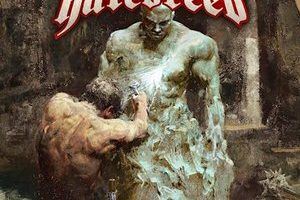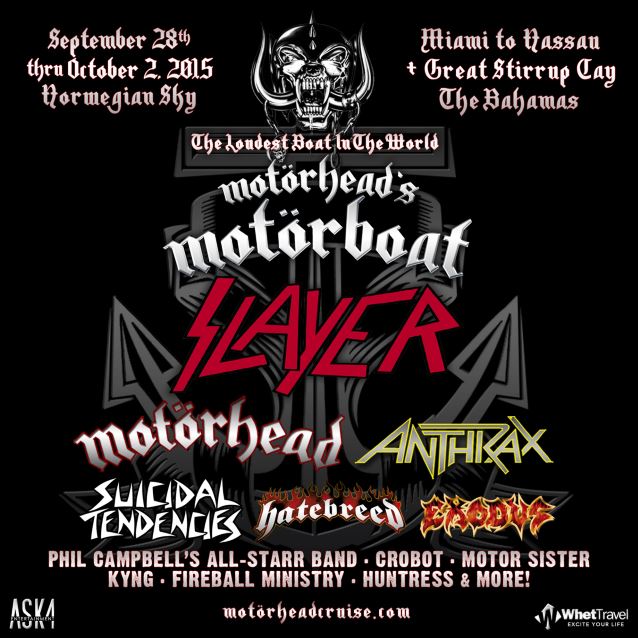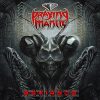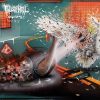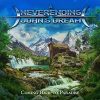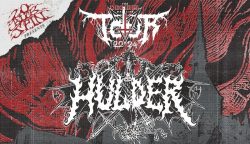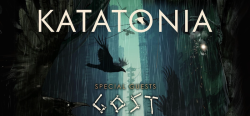Hatebreed – Still Heard…Very Much So
Sunday, 14th April 2013
Hatebreed is well past the point of being on an upswing. They’ve blown up. Conquered. Wrecked pits. So on and so forth. Their trajectory happened right before everyone’s eyes too; once 2002’s Perseverance dropped, it was for lack of a better term, “on.” And it’s been that way ever since. In spite of becoming hardcore metal’s most bonafide headline act, their DIY attitude still remains, as does a propensity to lash out with mosh-ready beatdowns. As such, the “All pit, no shit” attitude was adopted for the band’s new album, The Divinity of Purpose.
“That’s been the slogan for this record, going in and promoting,” begins drummer Matt Byrne. “That’s how you sum it up and I think it’s true. Song structure-wise, we went back to the old-school Hatebreed formula. I think with the last record, the self-titled album there was more of a heavy metal influence, more solos, more singing, songs were a little bit longer…more parts. The song structures overall were more complicated than what we’re known to be Hatebreed. But this one, we went back to our roots like Satisfaction [is the Death of Desire] and Perseverance. Shorter songs, faster parts, strong breakdowns, big choruses, simpler songs structures, catchier. Old-school is what you get.”
There’s not much wiggle-room in terms of Byrne’s statement about the album’s old-school swagger. It’s no-frills all the way on “Honor Never Dies,” “Before the Fight Ends in You,” and lead single “Put it to the Torch.” “When we were done and had the finished product, we released ‘Put it to the Torch’ first because we felt it was a good summary of the record,” notes Byrne. “It’s a good summary of what the album is. It’s got all the elements of Hatebreed. It’s a faster-paced song with a crushing breakdown at the end. It has that ‘take no shit’ attitude. We released that song for people to get a taste of what the album will be like.”
The current and rangy debate over beatdowns/breakdowns rages on, thanks in large part to the proliferation of them coming from the deathcore scene. While those bands (see: Whitechapel, Oceano, et al) seem to fancy boneheaded one-note chugs to get their pits riled up, the onus has always been on the riff for a quality breakdown for Hatebreed. Byrne sums it up rather simply:
“I think we’re conscious that a lot of bands don’t really know what a breakdown is. We center our breakdowns more on the riff than taking an E chord and doing a chugging pattern. To a lot of bands, that’ all a breakdown down (mimics chugs), more of a one-note pattern. Our breakdowns are more musical, it’s more about the riff. It’s not that we really struggle. I don’t want to sound arrogant, that’s how we write. It comes natural in our thinking. We’re trying to avoid being redundant with the monotone, chugging riffs. Not to be complicated, but to be creative with our riffs.”
So, the trick is to set it up properly?
“Overall, you try not to be generic,” he relays. “We’re not trying to reinvent the wheel. We do it what we do; that’s the Hatebreed identity. You don’t want to repeat yourself, but you don’t want to sound generic. That’s the goal. We come across stuff that doesn’t have the balls we want it to. When we come across something hot, we develop it and play on it.”
With a degree of reverence still found in Hatebreed’s halcyon Satisfaction days (see: Victory Records, vans, lots of pits, etc.), we wondered if Byrne had some genuine stories to tell. Alas, he did not, but the overriding sentiment and fondness for the band’s slum days are still very much there for the drummer.
“I [remember] being in a van,” Byrne remembers. “U-haul trailer, nothing luxurious. Sleeping on equipment, but whatever we could find that was soft. Not a lot of money – not like there’s a lot of money now. Shows were great. Every club…it was different. The hardcore scene was alive and well. There were a lot of up-and-coming bands and it was a really strong scene. A lot of craziness. Stage-diving. Circle pits were huge. A lot of energy. It was something really special.
“We were younger and hungry – you’re that kid that’s really pissed off about what’s going on and you’re touring around in a band – you don’t give a fuck about anything,” he continues. “You don’t have a care in the world – you just want to hit the stage and go crazy.”
The band’s stock skyrocketed after the release of the aforementioned Perseverance record, which if our calculations are correct, was one of the few metallic hardcore records to be picked up a major, Universal. Cue cushy Ozzfest runs, TV appearances for frontman Jamey Jasta, and a new ‘breed of fans that stretched beyond the DMV crowd. As Byrne would tell it, the energy after the release of Perseverance was palpable.
“The feeling was there. The energy was there and an excitement was there. We knew we were dong something original and to have a major label interested and to sign the band. It was crazy, this is where it starts, the beginning of the rocket ride. All these huge things started happening for the band. We went to a huge big budget studio, working with Matt Hyde. There was definitely a feeling that we were onto something big.”
For as big as Hatebreed has become, they’re still a DIY band. For Byrne and co. that’s the true measure of success.
“We’ve never lost that identity as far as Hatebreed goes,” he concludes. “We still play small clubs, with small barricades, up close and personal with the fans. We get bigger tour offers overseas, like the festivals and open airs, so we play those as well and you’re playing to 40,000. We’re on both sides of the spectrum. We have a special place in our hearts for people on a smaller scale, doing dive clubs, and doing interviews for zines and stuff like that. That’s our background and roots. We’ve never let that fall by the wayside.”












